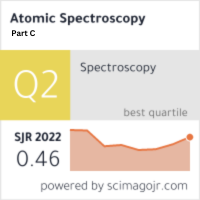Case Comment on Ajanta Pharma Ltd. v. Allergan Inc.: A Study on Spectroscopy and Patent Law in India
Keywords:
Spectroscopy, Drug Stability, Pharmaceutical Patent, Analytical Methods, Patent Law, Incremental Innovation.Abstract
: The Ajanta Pharma Ltd. v. Allergan Inc. case is a significant milestone in Indian intellectual property law, especially in the context of pharmaceutical patents. This case underscores the stringent requirements of Indian patent law, particularly under the Patents Act, 1970, which mandates rigorous criteria for patentability, especially for incremental innovations. The focal point of the dispute between Ajanta Pharma, an Indian generic drug manufacturer, and Allergan Inc., an international pharmaceutical company, was the patentability of a stable ophthalmic drug formulation containing brimonidine, used to treat glaucoma. Central to Allergan's claims was the use of spectroscopic techniques to ensure the stability and efficacy of the formulation, which they argued provided a novel and inventive step deserving of patent protection.
The legal challenge posed by Ajanta revolved around Section 3(d) of the Patents Act, 1970, which prevents "evergreening," or minor modifications to existing drugs intended to extend the life of a patent without substantial therapeutic advancement. Ajanta argued that Allergan’s improvements, verified by spectroscopic analysis, did not constitute an inventive step but were merely minor adjustments to an existing formulation. This argument brought the scientific and analytical role of spectroscopy into the spotlight, raising questions about the extent to which analytical methods, like spectroscopy, can substantiate a pharmaceutical patent in India.
The court’s ruling in this case has profound implications, not only for the pharmaceutical industry but also for innovators relying on advanced analytical techniques, such as spectroscopy, to differentiate their products in a competitive market. By exploring the details of the case and the interplay between scientific methods and patent law, this analysis aims to shed light on the complexities of protecting pharmaceutical innovations in India while balancing the need for affordable healthcare. The case serves as a critical reference point for future patent applications involving spectroscopic techniques in pharmaceutical compositions and highlights the challenges of securing patent rights in India’s stringent regulatory environment.



